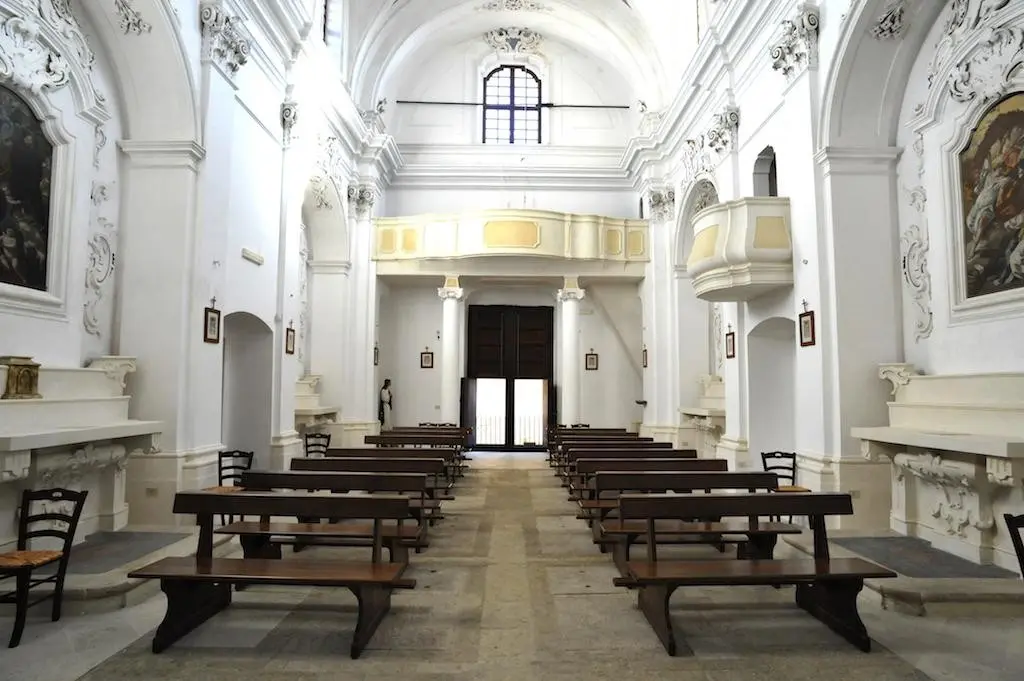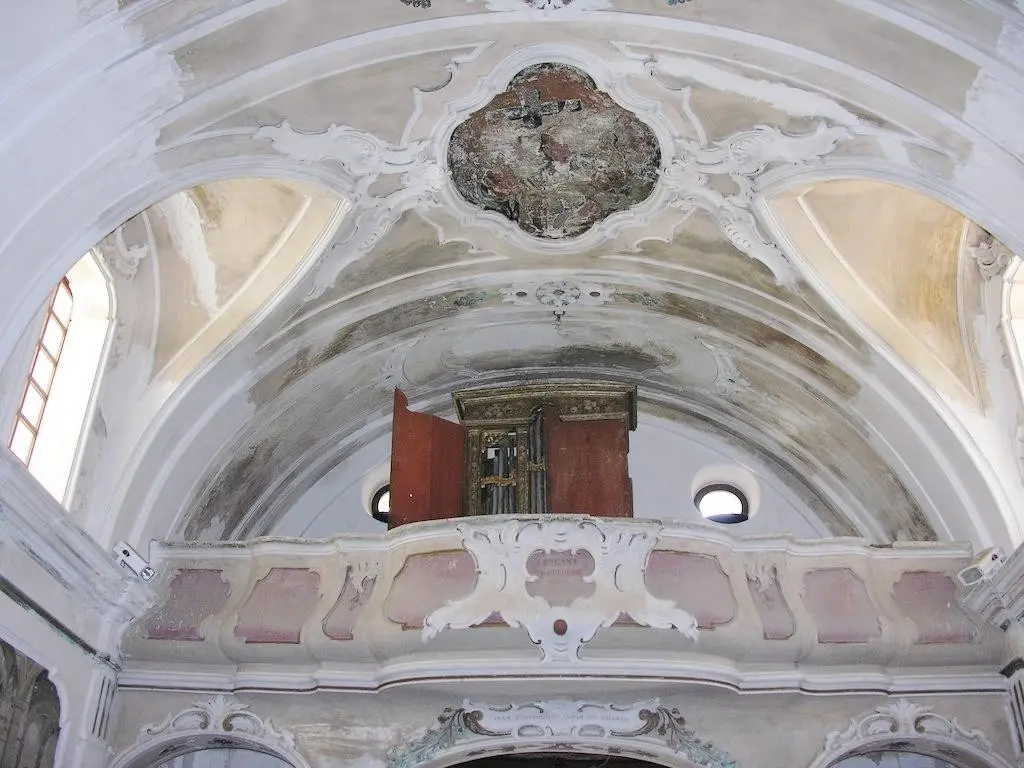Trip to Fiumefreddo Bruzio, among The Most Beautiful Villages in Italy
Fiumefreddo Bruzio and Salvatore Fiume, the painter who made the village a work of art

Art and Culture
Regione Calabria
Welcome to Fiumefreddo Bruzio, one of The Most Beautiful Villages in Italy in the province of Cosenza! A veritable terrace on the Tyrrhenian Sea, Fiumefreddo Bruzio is one of the oldest towns on this coastline.
The village of Fiumefreddo Bruzio, excellently preserved in its oldest part, tells visitors its long and fascinating history made up of fishing, invasions, traditions, but above all great encounters that have left their mark, such as the one with Salvatore Fiume, a Sicilian painter who turned the medieval ruins of the castle into a masterpiece of contemporary art.
Fiumefreddo, among The Most Beautiful Villages in Italy
The village of Fiumefreddo Bruzio could not go unnoticed by the attentive eye of Salvatore Fiume, a Sicilian painter originally from Comiso, near Fiumefreddo di Sicilia, who, returning from a trip along State Road 18, was literally captivated by the strange case of homonymy (Fiumefreddo, Calabria), so much so that he took the diversions leading to the historic centre on the hill. It is a true fortified medieval village, which still preserves intact its ancient walls and the so-called Merlata Gate, from which you can access the maze of alleys that criss-cross the town. A small stone jewel, Fiumefreddo Bruzio is a treasure chest of churches, aristocratic palaces and, above all, terraces that embrace the entire southern Tyrrhenian coast from above, from Cilento to the Aeolian Islands.
Don't believe it? Let's take a tour together around the village of Fiumefreddo Bruzio and you will be amazed... Let's start from the splendid Largo Torretta, which, together with Largo Rupe and Piazzetta Santa Domenica, offers a scenic belvedere worthy of a painting. Initially conceived for the purpose of sighting and defence against pirate attacks, these terraces enjoy a 360° view of the sea. Largo Torretta is distinguished by the particular presence of the so-called "distractors", i.e. architectural elements placed on the parapet whose profile, in the distance, is easily mistaken for a human silhouette, a sentinel in fact. This square is overlooked by the Palazzo del Municipio (former Convento dei Minimi) and the Torretta with the clock from which the space takes its name. In the centre is one of the sculptures with which artist Salvatore Fiume wished to pay homage to the village of Fiumefreddo Bruzio: it is The Surfer's Girl, a monumental fountain intended as a hymn to women and the sea.

Continuing our stroll through the streets of Fiumefreddo Bruzio, we visit the many churches that embellish the village, from the Mother Church of San Michele Arcangelo (1540), inside which one can admire famous paintings by Francesco Solimena and Giuseppe Pascaletti, to the churches of Addolorata and Santa Chiara, which are very old, one more beautiful than the other. Among the palaces that tell the noble history of the village of Fiumefreddo Bruzio are Barone del Bianco Palace, Gaudiosi Palace, Zupi Palace and Pignatelli Palace. In the small square known as Largo Salvatore Fiume is the artist's house.
Finally, we come to the architectural symbol that makes the profile of Fiumefreddo Bruzio unmistakable, the same one that fascinated the Sicilian painter, on his return from his holidays on the island: the medieval ruins of the Della Valle Castle (or Della Valle Palace). Dating back to 1054, the fortress is the work of Robert Guiscard and is located in the upper part of the village of Fiumefreddo Bruzio. It was an impregnable castle, at least until the arrival of Napoleon's army, which razed it to the ground with cannonballs (traces of which can still be seen together with the remains of the two 16th-century circular towers). Some of the rooms still have their floors and windows made of worked tufa, while the basements, subject to archaeological excavations, are now used as exhibition and conference rooms.
Not only art and history! In Fiumefreddo Bruzio, sea, nature and traditions welcome tourists who choose the seaside hamlet for their summer holidays: equipped beaches for families, a beautiful seafront promenade and the possibility of fishing, one of the main economic sources of the hamlet since antiquity.

The works of Salvatore Fiume in Fiumefreddo
It was precisely the Della Valle Castle that struck the imagination of Salvatore Fiume, so much so that he decided to create a masterpiece of contemporary art in its ruins. It was the summer of 1975 and the artist was preparing to fresco its walls with the astonishing cycle of 13 scenes known as the Eden Room, which depicts the story of a Calabrian slave girl imprisoned by the Turks. On a second trip to Fiumefreddo Bruzio in 1996, the artist painted the room with a new cycle, entitled The Room of Desires. The new scenes also portray the tenor Luciano Pavarotti and a self-portrait in the company of Fiume's new wife, the beautiful Zaù, of African origin.
Over the years, Salvatore Fiume paid homage to the hospitable village with several sculptures and yet another important fresco, this time in the tiny Church of San Rocco (18th century). The scene on the dome depicts Saint Roch saving the plague-stricken people.
"I painted the miracles of Saint Roch inside the dome of a small church dedicated to that Saint in a small town in Calabria called Fiumefreddo Bruzio. No one asked me or ordered that work. I myself begged the authorities to let me do it because since 1959 I had wanted to decorate a dome like Goya had done in Madrid in the chapel of San Antonio de la Florida".

"A Different Tale" exhibition: Fiumefreddo Bruzio
The exhibition ‘’A Different Tale‘’ represents a unique cultural project, designed to enhance some of Calabria's most fascinating villages through the art of illustration. Sixteen talented Calabrian authors have reinterpreted places, stories and popular traditions linked to these villages, creating modern works full of personality.
Presented in Melbourne and New York in October 2024, the exhibition celebrates Calabrian identity in a dialogue between tradition and innovation, involving an international audience.

Simonluca Spadanuda created the illustration of the village of Fiumefreddo Bruzio (CS). Born in 1980, he has cultivated a passion for drawing since childhood, inspired by his painter uncle and the world of Marvel comics.
In his career he has experimented with street art, music and digital graphics, refining his style through training experiences at the Scuola Arte & Messaggio in Milan and at the School of Visual Arts in New York. Through his studio Urbanmagic, he explores the potential of visual communication, transforming surfaces into artistic media with creativity and irony.
https://calabriastraordinaria.it/en/news/trip-to-fiumefreddo-bruzio-among-the-most-beautiful-villages-in-italy







